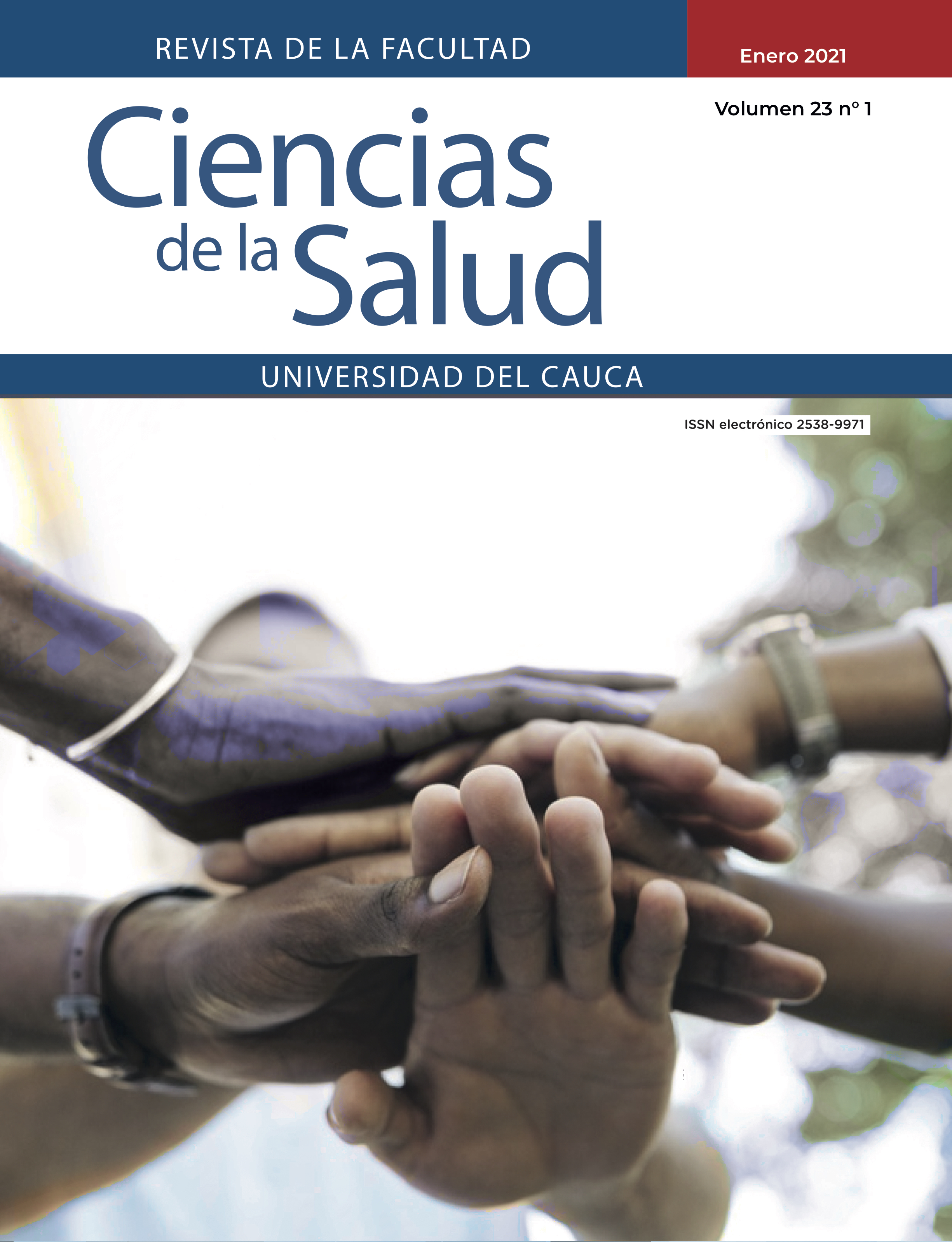Continuous renal replacement therapy in children. From concepts to prescription
Abstract
Acute kidney injury is considered as an abrupt decrease in kidney function that generates an accumulation of waste products, loss of fluid and electrolyte balance, and alteration of acid-base homeostasis. It is an entity with a high incidence that affects pediatric patients in critical condition. One in 10 patients affected by this pathology will require renal replacement therapy for its management. Currently, there is a set of therapeutic modalities that allow continuous circulation of blood through extracorporeal circuits to support and/or replace the normal function of the kidneys continuously 24 hours a day. Such modalities are grouped under the term: “Continuous renal replacement therapy” (CRRT) and have several advantages over traditional methods; however, there is some fear among health professionals when prescribing these therapies due to their complexity. In this literature review, the basic concepts, modalities, and indications of CRRT in children are presented in a practical way to facilitate its prescription.
Downloads
Disciplines:
Pediatric Nephrology, Pediatric Intensive Care, PediatricsReferences
Sosa-Medellín MÁ, Luviano-García JA. Continuous renal replacement therapy. Concepts, indications and basic aspects of its program. Med Interna Mex. 2018; 34(2):288–98. https://doi.org/10.24245/mim.v34i2.1652
Resendez T, Roque J. Manual De La Sociedad Latinoamericana De Cuidados Intensivos Pediatricos. 2016; (3):1–16.
Fernández S, Santiago MJ, González R, et al. Hemodynamic impact of the connection to continuous renal replacement therapy in critically ill children. Pediatr Nephrol. 2019; 34(1):163–8. https://doi.org/10.1007/s00467-018-4047-7
Beltramo F, DiCarlo J, Gruber JB, et al. Renal Replacement Therapy Modalities in Critically Ill Children. Pediatr Crit Care Med. 2019; 20(1):1–9. https://doi.org/10.1097/PCC.0000000000001754
Kaddourah A, Basu RK, Bagshaw SM, Goldstein SL. Epidemiology of Acute Kidney Injury in Critically Ill Children and Young Adults. N Engl J Med. 2017; 376(1):11–20. https://doi.org/10.1056/NEJMoa1611391
Jetton JG, Boohaker LJ, Sethi SK, Wazir S, Rohatgi S, Soranno DE, et al. Incidence and outcomes of neonatal acute kidney injury (AWAKEN): a multicentre, multinational, observational cohort study. Lancet Child Adolesc Heal. 2017; 1(3):184–94. https://doi.org/10.1016/S2352-4642(17)30069-X
Chawla LS, Bellomo R, Bihorac A, Goldstein SL, Siew ED, Bagshaw SM, et al. Acute kidney disease and renal recovery: Consensus report of the Acute Disease Quality Initiative (ADQI) 16 Workgroup. Nat Rev Nephrol. 2017; 13(4):241–57. https://doi.org/10.1038/nrneph.2017.2
Andreoli SP. Acute kidney injury in children. Pediatric Nephrology. 2009; 24(2):253–63. https://doi.org/10.1007/s00467-008-1074-9
Restrepo JM, Mondragon M V., Forero-Delgadillo JM, Lasso RE, Zemanate E, Bravo Y, et al. Acute renal failure in children. Multicenter prospective cohort study in medium-complexity intensive care units from the Colombian southeast. PLoS One. 2020; 15(8 August):1–11. https://doi.org/10.1371/journal.pone.0235976
Restrepo de Rovetto C, Mora JA, Alexandre Cardona S, Marmolejo AF, Paz JF, de Castano I. Acute kidney injury applying pRifle scale in Children of Hospital Universitario del Valle in Cali, Colombia: clinical features, management and evolution. Colombia médica. 2012; 43(3):200–5.
Kellum JA, Lameire N, Aspelin P, Barsoum RS, Burdmann EA, Goldstein SL et al. Kidney disease: Improving global outcomes (KDIGO) acute kidney injury work group. KDIGO clinical practice guideline for acute kidney injury. Kidney International Supplements. 2012; 2(1):1-138. https://doi.org/10.1038/kisup.2012.1
Cabral FC, Garcia PCR, Mattiello R, Dresser D, Fiori HH, Korb C, et al. Influence of acute kidney injury defined by the pediatric risk, injury, failure, loss, end-stage renal disease score on the clinical course of PICU patients. Pediatr Crit Care Med. 2015; 16(8): e275–82. https://doi.org/10.1097/PCC.0000000000000516
Hames DL, Ferguson MA, Kaza AK, Rajagopal S, Thiagarajan RR, Teele SA, et al. Renal replacement therapy in the pediatric cardiac intensive care unit. J Thorac Cardiovasc Surg. 2019; 158(5):1446–55. https://doi.org/10.1016/j.jtcvs.2019.06.061
Symons JM. Renal Replacement Therapy for the Critically Ill Infant. Third Edition. Critical Care Nephrology: Third Edition. 2017. P. 1230–1235.
Sethi SK, Mittal A, Nair N, Bagga A, Iyenger A, Ali U, et al. Pediatric Continuous Renal Replacement Therapy (PCRRT) expert committee recommendation on prescribing prolonged intermittent renal replacement therapy (PIRRT) in critically ill children. Hemodial Int. 2020; 24(2):237–51. https://doi.org/10.1111/hdi.12821
Symons JM, Chua AN, Somers MJG, Baum MA, Bunchman TE, Benfield MR, et al. Demographic characteristics of pediatric continuous renal replacement therapy: A report of the prospective pediatric continuous renal replacement therapy registry. Clin J Am Soc Nephrol. 2007; 2(4):732–8. https://doi.org/10.2215/CJN.03200906
Sutherland SM, Zappitelli M, Alexander SR, Chua AN, Brophy PD, Bunchman TE, et al. Fluid Overload and Mortality in Children Receiving Continuous Renal Replacement Therapy: The Prospective Pediatric Continuous Renal Replacement Therapy Registry. Am J Kidney Dis. 2010; 55(2):316–25. https://doi.org/10.1053/j.ajkd.2009.10.048
Selewski DT, Cornell TT, Blatt NB, Han YY, Mottes T, Kommareddi M, et al. Fluid overload and fluid removal in pediatric patients on extracorporeal membrane oxygenation requiring continuous renal replacement therapy. Crit Care Med. 2012; 40(9):2694–9. https://doi.org/10.1097/CCM.0b013e318258ff01
Chawla L, Davison D, Brasha-Mitchell E, et al. Development and standardization of a furosemide stress test to predict the severity of acute kidney injury. Crit Care, 2013; 17(5): R207. https://doi.org/10.1186/cc13015
Hackbarth R, Bunchman TE, Chua AN, Somers MJ, Baum MA, Symons JM, et al. The effect of vascular access location and size on circuit survival in pediatric continuous renal replacement therapy: A report from the PPCRRT registry. Int J Artif Organs. 2007; 30(12):1116–21. https://doi.org/10.1177/039139880703001212
Raymakers-Janssen PAMA, Lilien M, van Kessel IA, Veldhoen ES, Wösten-van Asperen RM, van Gestel JPJ. Citrate versus heparin anticoagulation in continuous renal replacement therapy in small children. Pediatr Nephrol. 2017; 2(10):1971–8. https://doi.org/10.1007/s00467-017-3694-4
Brophy PD, Somers MJG, Baum MA, Symons JM, McAfee N, Fortenberry JD, et al. Multi-centre evaluation of anticoagulation in patients receiving continuous renal replacement therapy (CRRT). Nephrol Dial Transplant. 2005; 20(7):1416–21. https://doi.org/10.1093/ndt/gfh817
Uchino S, Bellomo R, Morimatsu H, Morgera S, Schetz M, Tan I, Bouman C, Macedo E, Gibney N, Tolwani A, Straaten HO, Ronco C, Kellum JA. Discontinuation of continuous renal replacement therapy: a post hoc analysis of a prospective multicenter observational study. Crit Care Med. 2009; 37(9):2576-82. https://doi.org/10.1097/CCM.0b013e3181a38241












.png)



